As we get set to make a fresh start in the New Year 2013, we thought it was appropriate to expand our horizons and take in new sights. And what could be
better than looking at the state of the mutual fund businesses in other countries.
To give us a more well rounded perspective, we picked up a few of the biggest countries and a few that were closer to us – in size and geography. As you go
through the brief profiles, you will find that though each country is unique,
there are similarities with our market. I do hope you enjoy going through the
calendar and find the ‘picture’ insightful and interesting.
January - U.S.A
 The world leader in mutual
funds, the US industry manages $13 trillion, accounting for 57% of global
assets. An impressive 44% of American households own mutual funds with defined
contribution plans making up one-tenth of US households aggregate financial
assets. The first open end fund which was launched by Massachusetts Investors
Trust in Boston way back in 1924 is in existence even today. In the 1970s, the
industry got a major boost through money market funds which were able to offer
competitive returns due to the restrictions imposed on bank interest rates.
The world leader in mutual
funds, the US industry manages $13 trillion, accounting for 57% of global
assets. An impressive 44% of American households own mutual funds with defined
contribution plans making up one-tenth of US households aggregate financial
assets. The first open end fund which was launched by Massachusetts Investors
Trust in Boston way back in 1924 is in existence even today. In the 1970s, the
industry got a major boost through money market funds which were able to offer
competitive returns due to the restrictions imposed on bank interest rates.
February - United Kingdom
 With an 81% share,
institutional clients account for a major share of the UK fund market. UK’s
asset management firms earned a combined revenue of $ 17 billion in 2011 on an
AUM of $ 1.02 trillion. The main distribution channels are private banks,
retail banks, fund supermarkets and IFAs. Unlike the rest of Europe where many
AMCs are controlled by banks, in UK only 18% AMCs are owned by banking groups
while insurance firms control 17% and 65% are independent.
With an 81% share,
institutional clients account for a major share of the UK fund market. UK’s
asset management firms earned a combined revenue of $ 17 billion in 2011 on an
AUM of $ 1.02 trillion. The main distribution channels are private banks,
retail banks, fund supermarkets and IFAs. Unlike the rest of Europe where many
AMCs are controlled by banks, in UK only 18% AMCs are owned by banking groups
while insurance firms control 17% and 65% are independent.
March –Japan
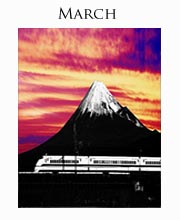 Mutual funds are known as
Toushin in Japan. It is the eight largest fund industry in the world and the
second largest in the Asia-Pacific region. There are 3937 funds in Japan
managing $ 674 billion. Japanese individuals
invest 4% of their personal savings in mutual funds. The growth of the industry
somewhat stagnated after the collapse of Tokyo stock market in 1990. Nomura,
Nikko and Daiwa are the largest asset managers in Japan.
Mutual funds are known as
Toushin in Japan. It is the eight largest fund industry in the world and the
second largest in the Asia-Pacific region. There are 3937 funds in Japan
managing $ 674 billion. Japanese individuals
invest 4% of their personal savings in mutual funds. The growth of the industry
somewhat stagnated after the collapse of Tokyo stock market in 1990. Nomura,
Nikko and Daiwa are the largest asset managers in Japan.
April – China
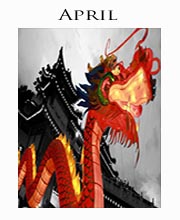 Typical of China, in spite
of being a late entrant in mutual funds, it is now one of the largest and
fastest growing markets. Currently, 73 AMCs manage $380 billion through nearly
1000 schemes. The growth of China’s mutual fund industry is fuelled by
retirement funds (similar to 401 k) which give tax breaks in equity
investments. Though 31 foreign groups have entered the Chinese mutual fund
industry, domestic partners have an overwhelming control. Recently, China has
allowed foreign banks to sell mutual funds.
Typical of China, in spite
of being a late entrant in mutual funds, it is now one of the largest and
fastest growing markets. Currently, 73 AMCs manage $380 billion through nearly
1000 schemes. The growth of China’s mutual fund industry is fuelled by
retirement funds (similar to 401 k) which give tax breaks in equity
investments. Though 31 foreign groups have entered the Chinese mutual fund
industry, domestic partners have an overwhelming control. Recently, China has
allowed foreign banks to sell mutual funds.
May – Canada
 Canada’s 80-year-old mutual
fund industry manages $834 billion.
There are around 150 mutual fund firms in Canada employing more than
90,000 people. Mutual funds and mutual fund wraps account for nearly 30% of
Canada’s financial wealth. Much like what has been recommended by SEBI
recently, Mutual Fund Dealers Association is the self-regulatory organization
(SRO) that regulates mutual fund dealers. A majority of Canadian advisors earn
from trail fees with some advisors charging a flat percentage fee, irrespective
of asset size.
Canada’s 80-year-old mutual
fund industry manages $834 billion.
There are around 150 mutual fund firms in Canada employing more than
90,000 people. Mutual funds and mutual fund wraps account for nearly 30% of
Canada’s financial wealth. Much like what has been recommended by SEBI
recently, Mutual Fund Dealers Association is the self-regulatory organization
(SRO) that regulates mutual fund dealers. A majority of Canadian advisors earn
from trail fees with some advisors charging a flat percentage fee, irrespective
of asset size.
June
– Thailand
 The first mutual fund was
formed in Thailand in 1975 by the Thai government in association with the
International Finance Corporation (IFC). Since then, the regulator has allowed
more entrants. Currently, there are 23 AMCs in Thailand managing $ 93 billion,
equal to 19% of the country’s GDP. The industry has seen rapid growth over the
last 15 years with the number of mutual fund investors going up to 29 lakh from
eight lakh mutual fund investors in 1997.
The first mutual fund was
formed in Thailand in 1975 by the Thai government in association with the
International Finance Corporation (IFC). Since then, the regulator has allowed
more entrants. Currently, there are 23 AMCs in Thailand managing $ 93 billion,
equal to 19% of the country’s GDP. The industry has seen rapid growth over the
last 15 years with the number of mutual fund investors going up to 29 lakh from
eight lakh mutual fund investors in 1997.
July
- France
 France is home to 608 AMCs
of which 150 AMCs have come up in the last five years. The industry which
manages $ 1.56 billion employs 83,000 people. Banks and independent advisors
are the major distributors of mutual funds.
In terms of AUM, France is the leader in Europe with a 20% market share.
In France, a majority of AMCs are owned independently with another 27% being
owned by banks. France’s PERCO, a pension plan accounts for one fifth of direct
and indirect holding of French equities in households financial wealth.
France is home to 608 AMCs
of which 150 AMCs have come up in the last five years. The industry which
manages $ 1.56 billion employs 83,000 people. Banks and independent advisors
are the major distributors of mutual funds.
In terms of AUM, France is the leader in Europe with a 20% market share.
In France, a majority of AMCs are owned independently with another 27% being
owned by banks. France’s PERCO, a pension plan accounts for one fifth of direct
and indirect holding of French equities in households financial wealth.
August - Hong Kong
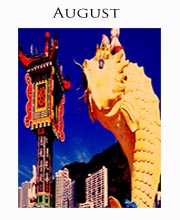 The country manages a large
pool of non-resident money through mutual funds, aka, unit trusts.The golden
period for the industry was when Hong Kong’s mutual fund assets grew from 16%
of GDP in 1992 to 52% in 1998. It has a large equity fund market though bond
funds are becoming hugely popular in the wake of financial crisis. The industry
assets under management stood at $ 743 billion. Equity funds in Hong Kong
charge 5%-6% initial charge or front loads.
The country manages a large
pool of non-resident money through mutual funds, aka, unit trusts.The golden
period for the industry was when Hong Kong’s mutual fund assets grew from 16%
of GDP in 1992 to 52% in 1998. It has a large equity fund market though bond
funds are becoming hugely popular in the wake of financial crisis. The industry
assets under management stood at $ 743 billion. Equity funds in Hong Kong
charge 5%-6% initial charge or front loads.
September – Australia
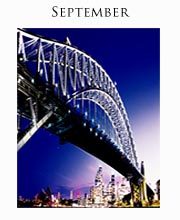 With an AUM of $ 1.72
trillion, it is the fourth largest mutual fund industry in the world.
Australia’s mutual fund industry comprises real estate investment trusts,
boutique funds and ETFs. The growth of the Australian fund industry is mainly
due to its matured financial market, large investor base and Australia’s
compulsory retirement income (superannuation). It also has a large retail
investor base. Introduction of mandatory retirement income system in 1992 saw
assets under management grow by 11 % with the AUM doubling since 2003.
With an AUM of $ 1.72
trillion, it is the fourth largest mutual fund industry in the world.
Australia’s mutual fund industry comprises real estate investment trusts,
boutique funds and ETFs. The growth of the Australian fund industry is mainly
due to its matured financial market, large investor base and Australia’s
compulsory retirement income (superannuation). It also has a large retail
investor base. Introduction of mandatory retirement income system in 1992 saw
assets under management grow by 11 % with the AUM doubling since 2003.
October – Pakistan
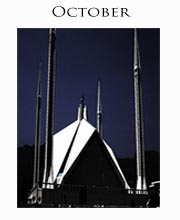 With an AUM of $ 2.6 billion
which is less than 1% of Pakistan’s GDP, the Pakistani mutual fund industry has
a long way to go. Low savings rate has been an impediment to the growth of the
economy and the mutual fund industry. The industry is dominated by
institutional investors with investor accounts being less than two lakh. Though
the industry grew rapidly from 2001-2007, the financial crisis has nearly
halved the industry’s AUM.
With an AUM of $ 2.6 billion
which is less than 1% of Pakistan’s GDP, the Pakistani mutual fund industry has
a long way to go. Low savings rate has been an impediment to the growth of the
economy and the mutual fund industry. The industry is dominated by
institutional investors with investor accounts being less than two lakh. Though
the industry grew rapidly from 2001-2007, the financial crisis has nearly
halved the industry’s AUM.
November – Italy
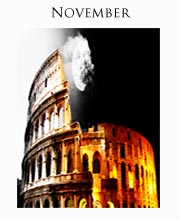 Though mutual funds emerged
only in 1984 in Italy, it is the second biggest market in continental Europe
after France. With more than 302 AMCs, its market share in Europe’s AUM stands
at 5%. The industry kick started during
late 1990s when government bonds lost their shine and interest rates dropped,
leading to money shifting to actively managed bonds. The industry today manages
$ 1.27 billion. 51% of AMCs are owned by
independent players, followed by banks.
Though mutual funds emerged
only in 1984 in Italy, it is the second biggest market in continental Europe
after France. With more than 302 AMCs, its market share in Europe’s AUM stands
at 5%. The industry kick started during
late 1990s when government bonds lost their shine and interest rates dropped,
leading to money shifting to actively managed bonds. The industry today manages
$ 1.27 billion. 51% of AMCs are owned by
independent players, followed by banks.
December – Luxembourg
 Liberal rules and minimal
taxes make it one of the most sought after places for asset managers. It is the
world leader in cross border fund distribution. Luxembourg domiciled investment
structures are distributed in more than 70 countries and account for more than
70% of UCITS funds distributed internationally. The country also offers a
variety of attractive fund structures in terms of Shariah-compliant investment
funds, microfinance investment vehicles and sustainable and responsible
investment vehicles.
Liberal rules and minimal
taxes make it one of the most sought after places for asset managers. It is the
world leader in cross border fund distribution. Luxembourg domiciled investment
structures are distributed in more than 70 countries and account for more than
70% of UCITS funds distributed internationally. The country also offers a
variety of attractive fund structures in terms of Shariah-compliant investment
funds, microfinance investment vehicles and sustainable and responsible
investment vehicles.




